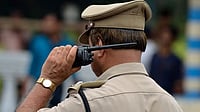The groundwater in most parts of Delhi is brackish in nature and the nitrate concentration is high in the northeastern parts of the capital, the Central Ground Water Board (CGWB) has said in a report.
"Chemical analysis of ground water samples collected in May 2021 showed that nitrate content in groundwater is within the permissible limit of 45 micrograms per litre in most of the state. However, concentration in the north-eastern parts of Delhi is high," the CGWB's groundwater year book 2021-22 said.
Except a few locations in the northern and western parts of the city, all areas have a fluoride concentration within the permissible limit of 1.5 micrograms per litre, it said. The eastern parts of Delhi, especially the areas around the Yamuna floodplains and the Delhi Quartzite Ridge zones, have an electrical conductivity (EC) within the permissible range of 0 to 2,250 microsiemens per centimetre, the CGWB said.
"The rest of the capital, barring some pockets of southwest, northwest and west districts, has EC value of more than 3,000 microsiemens per centimetre. It is also observed that water from deeper aquifers have greater EC value than the water from shallow aquifers. The EC value increases with depth," it said. Salinity, the measure of the amount of dissolved salts in water, is directly proportional to electrical conductivity (EC).
In general, fresh water has an EC of less than 1,500 microsiemens per centimetre, brackish water between 1,500 and 15,000 microsiemens per centimetre and saline water has an EC of more than 15,000 microsiemens per centimetre. The chloride content in the groundwater is mostly below 250 micrograms per litre except in cases where inland salinity is prevalent.
According to the Bureau of Indian Standards (BIS), the desirable limit of chloride in drinking water is 250 micrograms per litre. However, it can be extended to 1,000 micrograms per litre in cases where no alternative source of water with the desired concentration is available. "Chloride concentration in groundwater of Delhi is related with the EC content. It is observed that in areas having EC values within permissible limits (2,250 microsiemens per centimetre to 3,000 microsiemens per centimetre), the chloride content also lies within the permissible limit of 250 micrograms per litre.
In areas having a high EC of more than 3,000 microsiemens per centimetre, the chloride value is also high -- more than 3,000 micrograms per litre. Some of these areas include Sanjay Gandhi Transport Nagar (3,800), the Bawana water treatment plant (4,697) and Pusa (3,871).


























